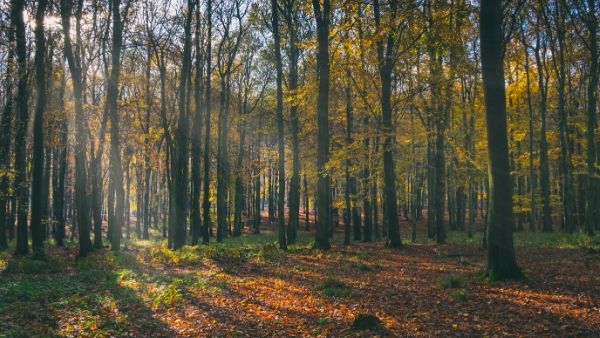Author
In June 2019, HMRC released guidance clarifying which aspects of a property might qualify as “non-residential” in relation to the application of the “mixed use” rate for stamp duty land tax (SDLT).
SDLT is calculated according to the amount paid for a property. Wholly residential transactions are liable for a maximum SDLT rate of 15% on the “top slice” of the property’s value (including an additional 3% second home surcharge). This is in contrast to “mixed use” transactions (transactions that include non-residential aspects) where the purchaser could expect to pay a maximum rate of 5%.
For many agricultural properties, the distinction between “residential” and “mixed use” can be ambiguous.
Residential property is defined in Section 116(1) Finance Act 2003 as being:
- A building that is used or suitable for use as a dwelling, or is in the process of being constructed or adapted for such use, and
- Land that is or forms part of the garden or grounds of a building within paragraph (a) (including any building or structure on such land), or
- An interest in or right over land that subsists for the benefit of a building within paragraph (a) or of land within paragraph (b);
and ‘non-residential property’ means any property that is not ‘residential property’.
According to this definition, where a residential property includes a “non-residential” element, the property is no longer wholly residential and so the entire purchase can be assessed at the lower “mixed use” SDLT rates.
The potential of reduced tax liability is encouraging purchasers to include an additional “non-residential” element within their house purchase. The Telegraph (Article published on 22 September 2017) optimistically suggested that bundling “a small plot of Nottinghamshire woodland” with one’s “Mayfair townhouse” could in theory create the “mixed use” tax-savings parcel, although this is likely to be viewed with suspicion by HMRC.
However, this principle could have sensible application for purchasers of country estates and agricultural properties, which may include a plethora of elements with a traditional “non-residential” use.
What land would not constitute “grounds or garden”?
Recent discussion, as summarised in Adam Corbin’s article “Stamp Duty Land Tax and mixed use premises: “grounds with house for sale?”” has focused around what type of land falls outside the scope of “garden or grounds” and would therefore be classed as “non-residential property”.
Muddying the waters of the debate was the existence of guidance released by HMRC in 1995 in relation to Capital Gains Tax (CGT). This guidance limited “grounds” to being “enclosed land surrounding or attached to a dwelling house or other building serving chiefly for ornament or recreation” [note RI 119]. This narrow interpretation aided HMRC in obtaining CGT, but has had the opposite effect in relation to SDLT, as it indicates that land which could be described as grounds (and thus “residential” under the S.116 Finance Act definition) must be “surrounding or attached” to a house, or be used for “ornamental or recreational” purposes. Perhaps in an effort to reduce confusion, HMRC has now withdrawn this particular guidance.
Hyman v HMRC case
The withdrawal of the 1995 guidance did not prevent Mr and Mrs Hyman from applying this definition of “grounds” earlier this year in Hyman v HMRC (2019). Mr and Mrs Hyman argued that there were three “non-residential” elements to their property, including a derelict barn, meadow and public bridleway, and therefore this should qualify their whole property for a reduced “mixed use” tax rate. This classification would amount to a saving of £34,950.00 when compared to the wholly residential rate.
The Hymans argued that the physical separation (by distance and hedges) of the barn, meadow and bridleway evidenced that they were independent of the dwelling’s “gardens and grounds”. Further, the derelict condition of the barn, and public nature of the bridleway and meadow meant that neither could they be used for “private, ornamental or recreational” purposes and so would not fall within section 161(1)(b). Additionally, Mr Hyman contended that the barn was classified by planners as being “non-residential” due to the absence of a planning permission enabling its conversion to a dwelling.
However, the First-tier Tax Tribunal interpreted “grounds” widely and translated its meaning as being “land attached to or surrounding a house” which is “available to the owners to use as they wish”, irrespective of whether the land was actively used by the owners. The Tribunal dismissed the notion that “grounds” must be for ornamental or recreational purposes, and stated that it was possible for other people to have rights over the land without making it “any less the grounds of that person’s residence”.
New HMRC guidance
In anticipation of a raft of cases along the same lines as Hyman v HMRC and building on their success in that claim, HMRC released detailed guidance in June this year clarifying what constitutes “non-residential” land.
The guidance states that the use of the land in question will often be determinative of its status, as “non-residential” land will usually be land used for commercial purposes. Historical use may be taken into account, but any future or planned use of the land will not be relevant. To allay agricultural fears, the guidance does clarify that a field left fallow will not become “grounds or garden” when not being actively farmed.
The guidance lists other factors that will be taken into account, such as the layout of the land and outbuildings and the geographical distance between the land and the dwelling. However, it is emphasised that any hindrances on the land (rights of ways, access for statutory undertakers) will not prevent the land being “grounds”.
Finally, HMRC has clarified that “it does not follow that any land beyond the CGT ‘permitted area’ is not the ‘garden or grounds’” for SDLT purposes.

